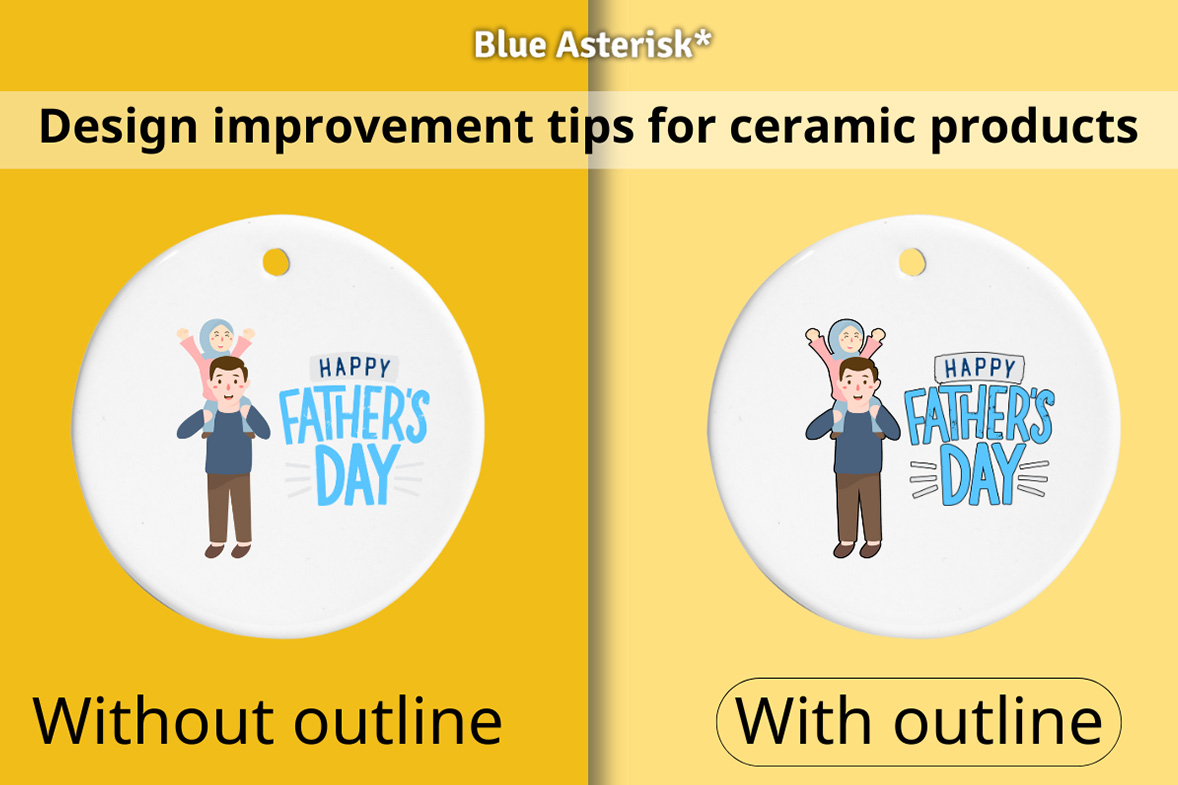- Empty cart.
- Continue Shopping
Guidelines to enhance ceramic design quality

Incorporating digital artwork into products is a long-standing practice, particularly in the Print-On-Demand (POD) industry. However, when these designs are applied to various materials—especially ceramics—the print quality can differ significantly. This makes having detailed design guidelines more essential than ever.
Recognizing this challenge, Blue* has curated a set of tried-and-tested tips based on our experience to help sellers fine-tune their digital designs specifically for ceramic products. These optimizations not only improve print quality but also deliver higher-quality products to customers.
Understanding the Relationship Between Material and Printing Method
Each type of material requires a specific printing technique, and each technique comes with its own considerations. To maximize print quality, sellers must understand the printing process tailored to the product’s material.
For instance:
- Ceramic items use sublimation (thermal transfer printing).
- Apparel products like t-shirts use DTG (Direct-to-Garment) printing.
Key Design Considerations for Ceramic Products
Use the Correct Color Mode
Blue* recommends designing in the RGB color mode to ensure that the final product reflects accurate and vivid colors during the print process.
Set the Right Dimensions
High-resolution artwork is important, but if the file isn’t scaled correctly to fit the product, distortion may occur. Always match the design size to the actual product dimensions—especially for designs involving images.
Align Designs Within Safe Zones
- Safe area: Place key content and important elements here to avoid any cropping.
- Non-safe area: Avoid placing essential design elements or borders here, as they might be trimmed during production. Use a background color to fill this space if needed.
Benefits of Optimized Designs for Ceramic Printing
When you optimize your designs and understand the limits of each material, sublimation printing can produce sharp, vivid images with long-lasting color durability.
Pro Tips to Boost Ceramic Print Quality
- Upscale your design’s resolution: Use 3x, 5x, or 10x the pixel size specified in the template to achieve better printing results.
- Add bold outlines: This works especially well for light-toned or single-color illustrations.
- Use bold and solid backgrounds: Since Blue* offers full coverage printing on ornaments, strong backgrounds help your artwork pop.
- Test before mass production: Print a sample to check clarity of small details, text, thin lines, or effects that may blend with the ornament’s base color.
- Opt for high-contrast colors: For example, skin tones may appear faint on white ceramics compared to how they look on a digital screen.
- Use bold lines and strong color palettes for better visibility.
- Save designs in PNG format to maintain transparency.
- Maintain at least 300 DPI resolution to ensure clarity.
- Stick to one-sided printing on ornaments to reduce printing errors.
- Avoid reducing color opacity through transparent gradients—they may disappear or alter significantly after printing.
- Minimize on-screen effects like glitter, shadows, or dashed lines—these rarely translate well in print, especially on ceramics or fabric.
🔍 Pro Tip for High-Volume Sellers
For bulk orders, Blue* offers demo product printing with photos, so you can preview and adjust your design before final submission.









